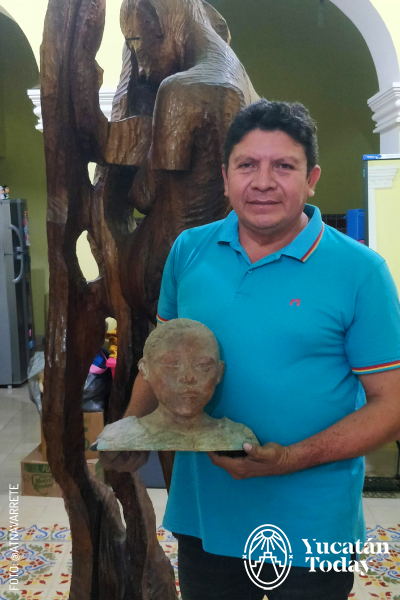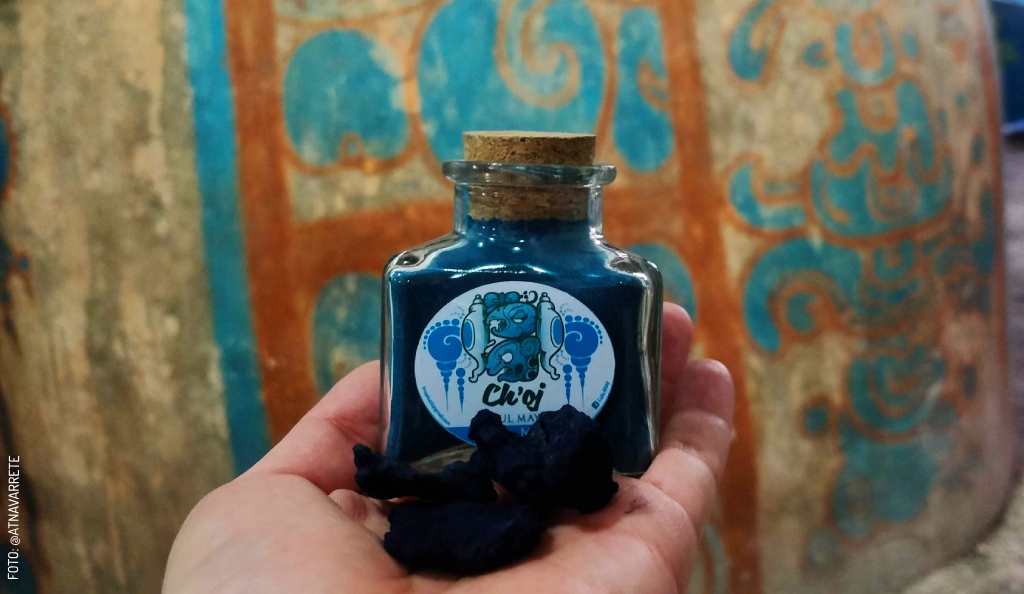
How is the Maya blue pigment made?
If you've ever witnessed the sunlight reflected on a cenote, bringing out mesmerizing shades of blue across the water, or marveled at reproductions (or the real deal, if you're lucky) of the Bonampak murals in Chiapas, chances are your eyes have been treated to a vivid hue known as "Maya blue." The color and what’s behind it are, in one word, utterly captivating.
![2405 Añil plantas yucatecas endemicas para el azul maya by atnavarrete]() What is Maya blue and how is it produced?
What is Maya blue and how is it produced?
Maya blue, as we now know, is derived from a blend of a plant called anil (añil) or indigo (Indigofera suffruticosa) with the white earth abundant in Sacalum and Ticul, which, again, we now know is rich in a mineral called palygorskite. Once the clay is cooked and dyed, Maya blue becomes a highly durable pigment, resistant to corrosion, fading, and moisture, as evidenced by the Bonampak murals themselves.
Despite this, the use and production of Maya blue in Yucatán (and throughout Mexico) were lost after the Conquest; it wasn't until the 20th century, with the help of technologies like X-ray crystallography and infrared spectroscopy, that its composition began to be rediscovered. However, figuring out the composition of Maya blue is not quite the same as uncovering a "recipe" for recreating it.
Maya blue nowadays
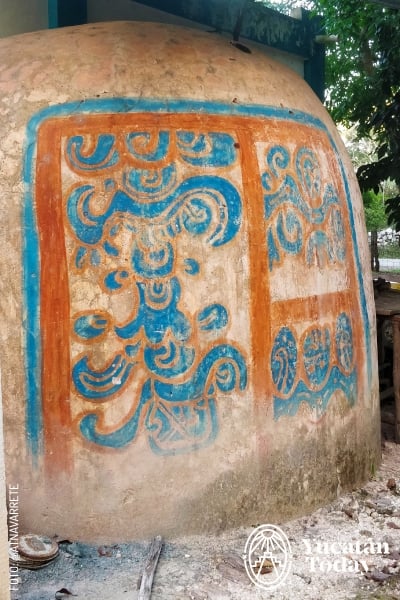 In the town of Dzan, in southern Yucatán (between Ticul and Maní), lives an artist/artisan with a truly fascinating life story. From a very young age, Luis May Ku harbored a true passion for art. He wanted to study and pursue it full-time, but his father talked him into becoming a teacher, a profession he still practices. Even as he was working towards his teaching degree, he gained recognition for his talent working with wood as a self-taught carver and sculptor. Despite his success in this field, the birth of his first daughter and some subsequent health complications forced him to set aside woodwork just a few years later.
In the town of Dzan, in southern Yucatán (between Ticul and Maní), lives an artist/artisan with a truly fascinating life story. From a very young age, Luis May Ku harbored a true passion for art. He wanted to study and pursue it full-time, but his father talked him into becoming a teacher, a profession he still practices. Even as he was working towards his teaching degree, he gained recognition for his talent working with wood as a self-taught carver and sculptor. Despite his success in this field, the birth of his first daughter and some subsequent health complications forced him to set aside woodwork just a few years later.
But making art was in his soul, and he couldn’t stay away; while woodworking was out of the question, the proximity of his hometown Dzan to Ticul, a land of potters, led him to experiment with clay. Then he was faced with a dilemma: how was he expected to decorate the art of clay, passed down for generations, with vinyl paint? It was out of the question, he decided, and set out to use only natural colors in his work. He soon discovered that the Yucatán soil was a great source of mineral colors like yellow, red, and black, but what about blue? That's how Luis May became interested in Maya blue.
Other uses of the anil, indigo, or Ch’ooj plant
It wasn't an easy task, he tells us. It took him years of research just to find the añil plant (known in Maya as Ch’ooj, the name of the color blue) locally; thanks to conversations he had with elders in his community (both in Dzan and in Cobá, where the school where he works as a teacher is located), he knew that the Ch’ooj plant was used to "whiten" the clothes of Mestizos (Hipil and Guayabera), giving them a slight blue tint, to create the illusion of a brighter white. However, the noble anil or Ch’ooj plant had been replaced by industrial detergents and whiteners, and, as happened with Maya blue, fell into disuse.
The Ch’ooj or anil plant began to be used solely as a medicinal plant among those who still practice Maya herbal medicine. Its properties, Luis says, are associated with relieving stomach pains and lung ailments, but also with the treatment of epilepsy.
How Luis May Ku "rediscovered" Maya blue
It was practically a stroke of destiny: when he finally found the plant, it was at his workplace, being cared for by a gentleman who used it to treat some of his ailments. Luis was able to propagate the plant and, from then on, dedicated himself to trying to recreate the process for making Maya blue; all signs point to success.
From that little plant he found, Luis now has a whole Ch’ooj plantation. With it, he creates pigments that he combines with resins from local trees as well as minerals from the area, through a process he developed himself through multiple trial and error attempts.
How authentic is Luis May's recreation of the vegetable pigment of Maya blue? As he tells us, both national and international institutions have studied and determined that the molecules of indigo and palygorskite are interspersed in Luis's creations; this means they are authentic Maya blue, and they will maintain their wonderful shade of turquoise for at least 1,400 years.
Two Maya blue workshops in Dzan, Yucatán
If you want to learn about the Ch’ooj plant, Maya blue, and the different techniques to which it can be applied, I have great news for you: Luis May offers textile dyeing workshops using the plant in two different techniques, so you can take home your own garments in authentic Maya blue. These workshops are held on weekends by reservation only, with a minimum of 10 participants ($500 pesos per person). If you want to delve even deeper into Maya blue, you can also participate in a week-long pottery workshop, where you will learn to work with clay and apply the blue pigment, along with other mineral pigments, to frescoes, just as the ancient Maya did centuries ago.
Where to buy (or try!) Maya blue pigment
To participate in these workshops or purchase the pigment, contact Luis May directly at Tel. 997 113 6803, or contact him through Facebook: https://www.facebook.com/yunkashh
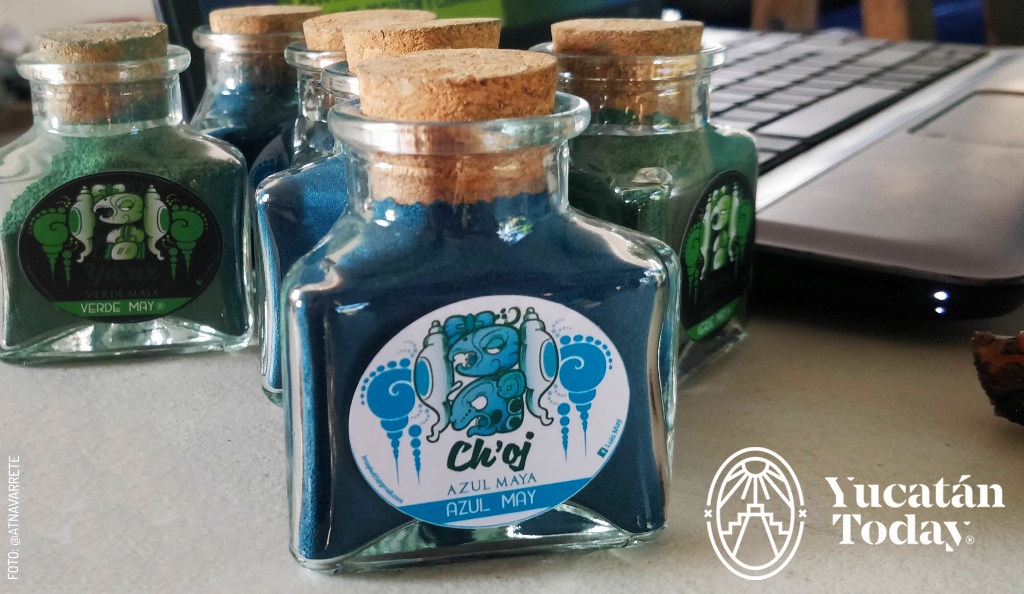
Photography by Alicia Navarrete for its use in Yucatán Today.
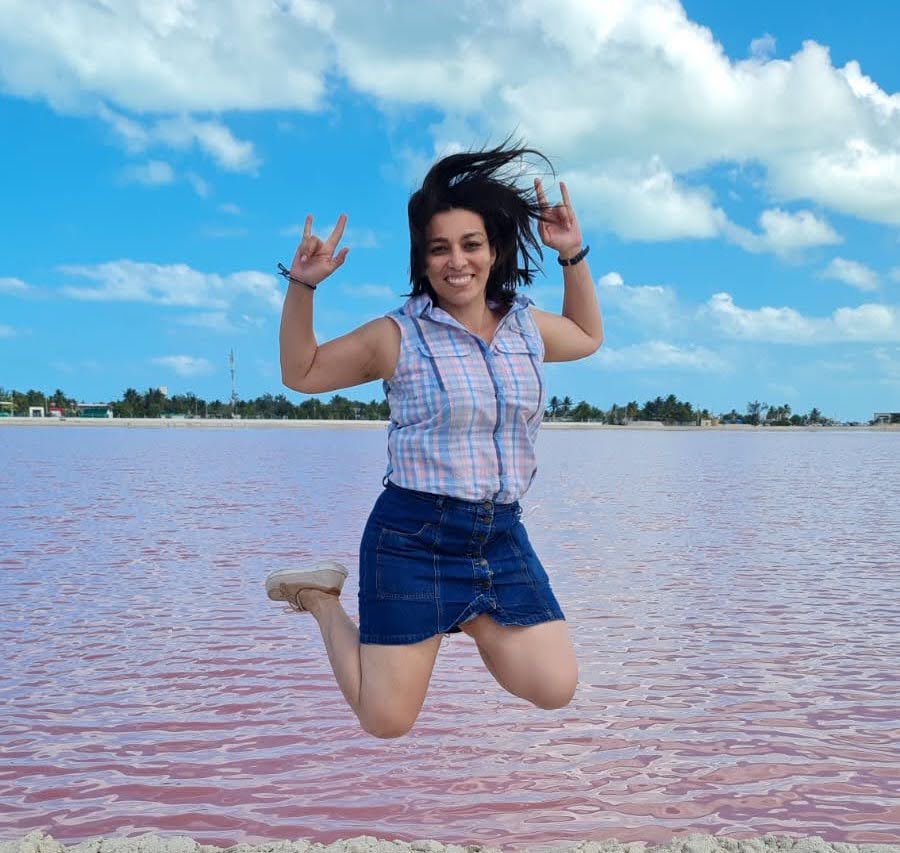
Author: Alicia Navarrete Alonso
As a kid I heard that there's more to see than can ever be seen and more to do than can ever be done, so I set out to try. I'm passionate about knowledge and I love to share whatever my own is.
Receive the latest articles and much more from the best of Yucatán in your email!
Related articles
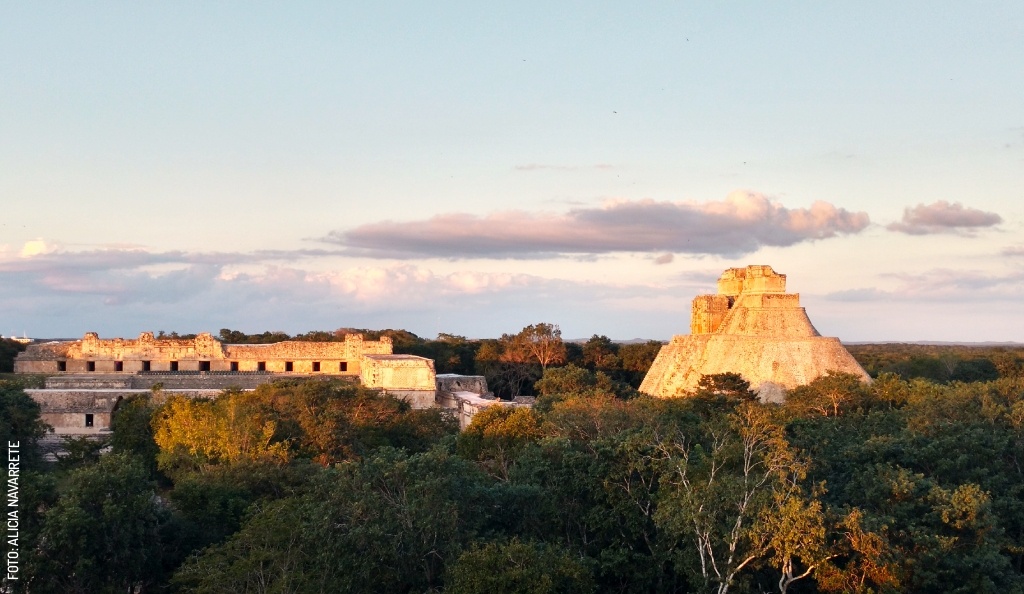
A Getaway to Uxmal and its surroundings in two days
Explore Uxmal & the Puuc Route: Mayan wonders, Choco-Story, and Luis May's Mayan blue. 1-2 day Yucatan itinerary. #Uxmal #RutaPuuc #MayanRuins...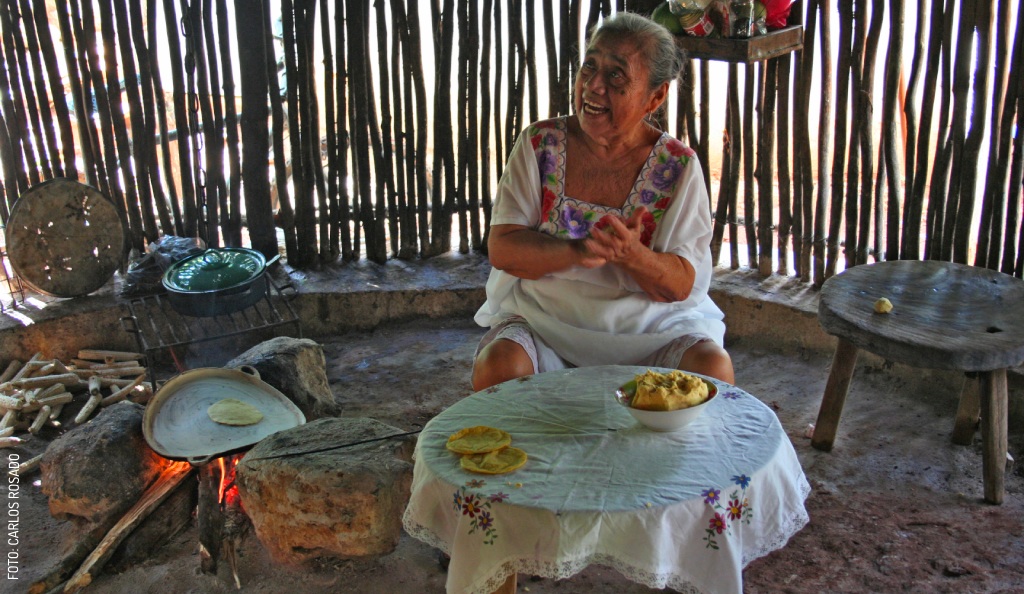
True to the Essence: The Maya Kitchen and Its Cultural Significance
Explore the Maya kitchen, and discover the fusion of ancient flavors, traditions, and the challenges in preserving this so important cultural legacy.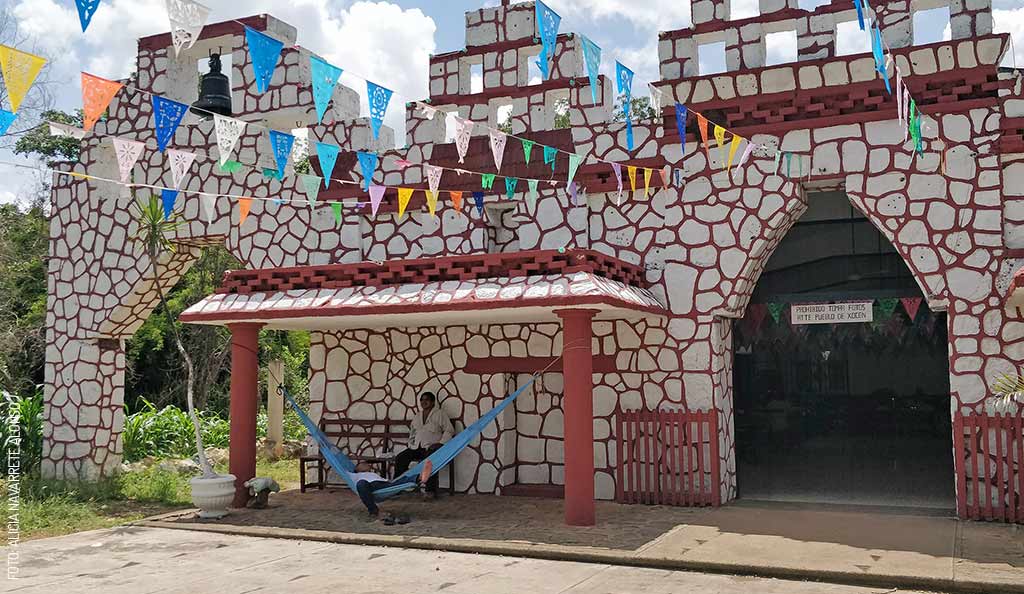


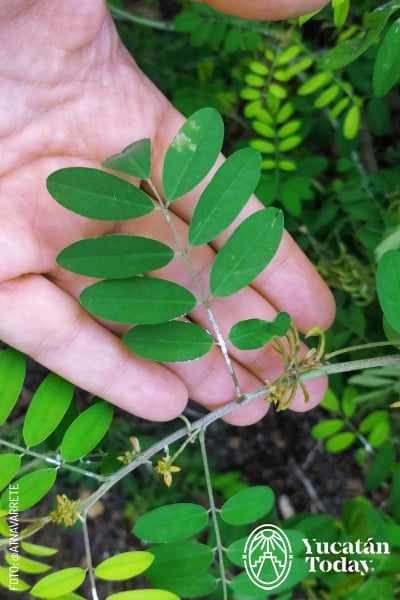 What is Maya blue and how is it produced?
What is Maya blue and how is it produced?